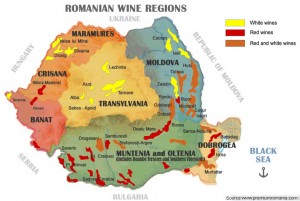2. DOC and IG appelations
– 32 controlled denomination of origin (DOC) for still wines:Târnave, Alba Iulia, Sebeş-Apold, Aiud, Lechinţa, Cotnari, Iaşi, Bohotin, Huşi, Iana, Dealu Bujorului, Nicoreşti, Panciu, Odobeşti, Coteşti, Cernăteşti-Podgoria, Dealu Mare, Pietroasa, Ştefăneşti, Sâmbureşti, Drăgăşani, Banu Mărăcine, Segarcea, Mehedinţi, Recaş, Banat, Miniş, Crişana, Murfatlar, Babadag, Sarica Niculiţel, Oltina.
– 10 controlled denomination of origin for sparkling wines: Târnave, Alba Iulia, Sebeş-Apold, Iaşi, Bucium, Huşi, Panciu, Dealu Mare, Şimleul Silvaniei, Murfatlar.
– 12 geographical indications (IG) for still wines: The Hills of Transilvania, The Hills of Moldova, The Hills of Vrancea, The Hills of Muntenia, The Hills of Oltenia, The vineyards of Caraş, The Vineyards of Timiş, The Hills of Zarand, The Hills of Crişana, The Hills of Sătmar, Colinele Dobrogei, The Terrasses of the Danube.
